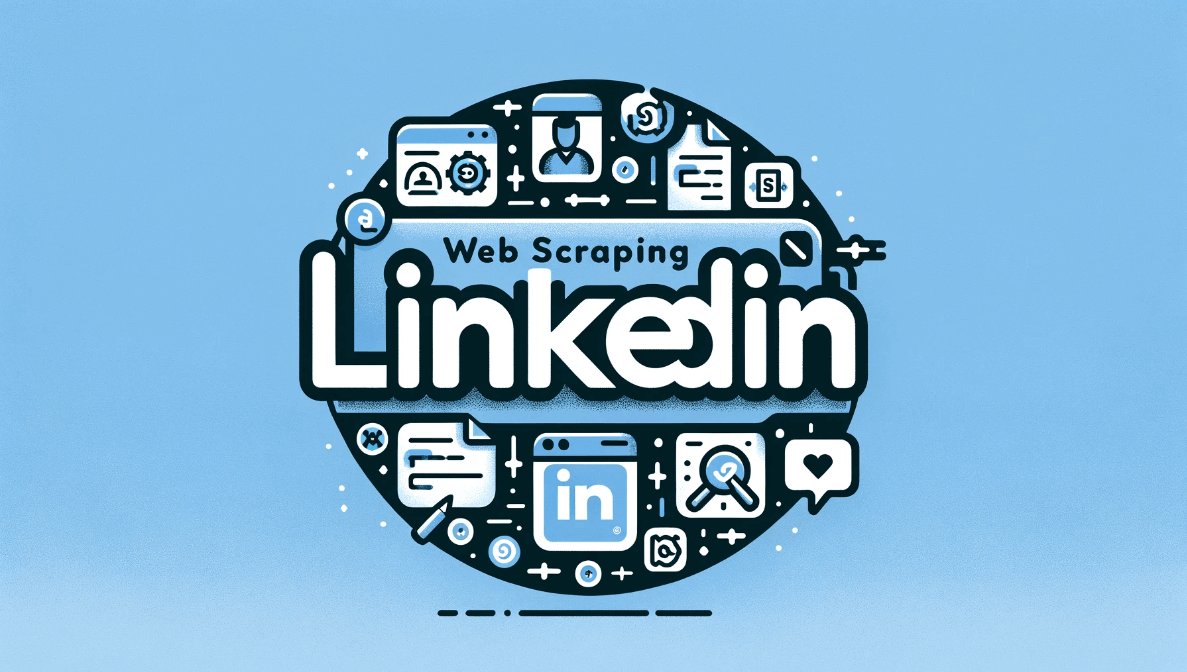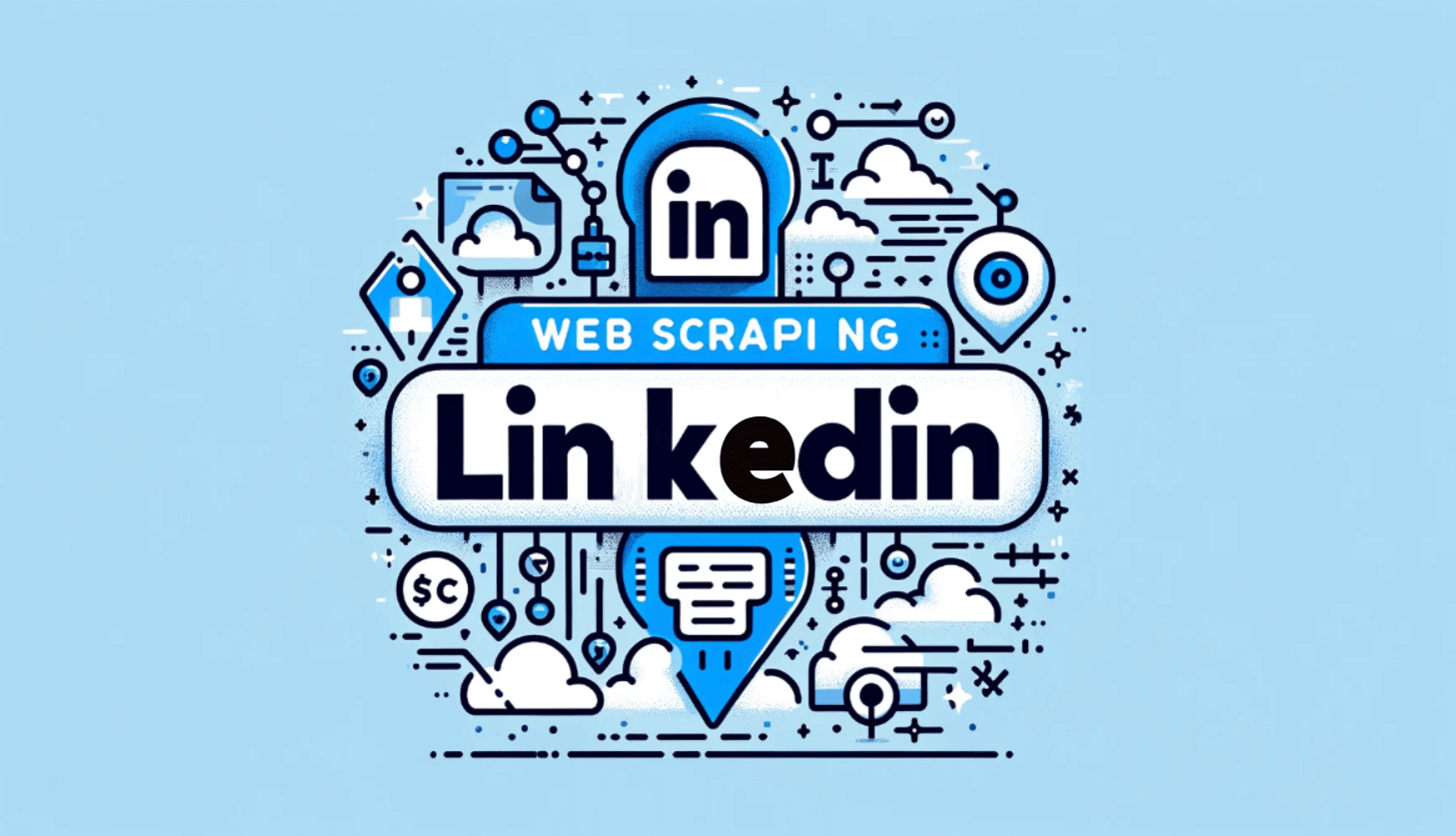Web Scraping Linkedin: How to Scrape Data From LinkedIn

With web scraping, marketers, data enthusiasts, and companies can now extract important information from a variety of websites, making it a strong tool. Scraping can provide insights into market trends, prospective leads, and hiring prospects on professional networking sites such as LinkedIn. However, because LinkedIn is a professional network and the data is sensitive, scraping it is very different from scraping other networks. We will discuss LinkedIn data scraping laws and techniques in this post. This is a detailed tutorial that includes Linkedin web scraping.
What is a LinkedIn web scraping ?
LinkedIn web scraping is the process of obtaining data from pages, profiles, and other parts of the LinkedIn website by utilizing software tools. For lead generation, market research, or hiring objectives, this procedure can be utilized to collect information about professional backgrounds, talents, and contact details.
Is it legal to scrape LinkedIn data?
The legality of stealing information from LinkedIn is complicated and differs by country. The Terms of Service on LinkedIn generally forbid scraping. Legal battles like the LinkedIn v. HiQ Labs case have brought attention to how controversial web scraping techniques can be. Legal counsel should be sought before attempting to scrape LinkedIn, and ethical considerations should be taken into account.

Understanding the LinkedIn Legal Framework
Navigating the legal landscape of web scraping is crucial, particularly for a platform like LinkedIn. There is a thin line separating what is seen to be an infringement on user privacy or even a breach of LinkedIn's terms of service and legality. It's critical to comprehend the limits and moral implications of scraping operations because the platform has set forth explicit restrictions and has already taken legal action to preserve its data.
Tools for LinkedIn Scraping
The subtleties of scraping LinkedIn profiles and data are catered to by a variety of tools and systems. The choice of tool mostly relies on the complexity of the activity and the amount of data required. Options range from complicated software that requires programming skills, such Python libraries (BeautifulSoup, Selenium), to more user-friendly browser extensions and third-party services. It's critical to choose tools that abide by applicable laws and LinkedIn's API usage guidelines.
The Best way to LinkedIn profile scrape
Utilizing specialist scraping tools or services that can navigate LinkedIn's structure and collect data without breaking any conditions or setting off anti-scraping devices is usually the best way for successful LinkedIn profile scraping. Selecting solutions that adhere to LinkedIn's API usage restrictions and privacy settings is crucial.

LinkedIn Scraping: How to do it? (Step by Step Guide)
Web scraping LinkedIn involves extracting data from the platform, but it's important to approach this task cautiously due to legal and ethical considerations. Here's a simplified guide based on experience:
- Understand Your Goals: First, be clear about what data you're seeking from LinkedIn. Is it job titles, industries, skills, or something else? Your goals will shape your approach.
- Choose Your Tools Wisely: There are numerous web scraping tools available, some specifically tailored for LinkedIn like Octoparse or ParseHub. Select one that suits your technical skill level and scraping needs.
- Set Up the Scraper: Install your chosen tool and set it up by specifying the LinkedIn URLs you wish to scrape. This could be profiles, company pages, or job listings.
- Respect LinkedIn's Rules: Configure your scraper to mimic human behavior – slow down the scraping speed to avoid overwhelming LinkedIn's servers and triggering anti-scraping measures.
- Run a Test: Before full-scale scraping, do a small test run to ensure your setup works as expected and you're collecting the right data.
- Start Scraping: With everything set up, start your scraping. Monitor the process closely to ensure it runs smoothly and doesn't breach LinkedIn's usage policies.
- Review and Clean the Data: After scraping, review the data for accuracy and relevance. Clean it to remove any inconsistencies or irrelevant information.
- Use Data Responsibly: Finally, use the scraped data ethically. Ensure your use complies with data protection laws and respects individuals' privacy.
Remember, while web scraping can be technically straightforward, the key is to proceed with caution, respect LinkedIn's terms of use, and always prioritize ethical data handling practices.
Best Practices for Scraping LinkedIn
Utilizing the appropriate tools is not enough to accomplish effective LinkedIn scraping; a plan is also needed. Maintaining the quality and applicability of the data gathered, protecting user privacy, and adhering to the platform's rate constraints are examples of best practices. In order to remain compliant, it's also a good idea to periodically check LinkedIn's policy modifications. Additionally, scraping should be used to supplement data analysis rather than as a stand-alone source of information.
